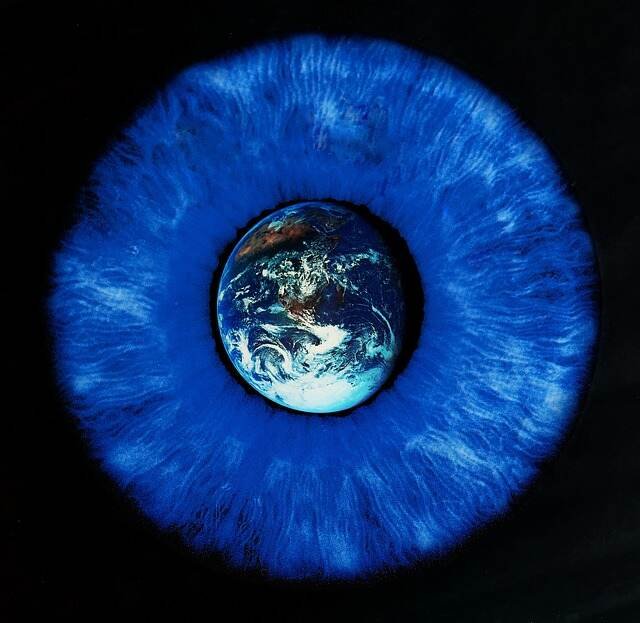Why the sky is blue? The Science Behind It
Why the sky is blue? Some people think it’s the reflection of the ocean, but that’s not accurate. Although sunlight appears white, it’s actually a mix of different colour wavelengths. But in our atmosphere we can really only see the wavelengths that scatter blue and violet scatter the most. But our eyes are most sensitive to the blue light, which is why the sky looks blue.
On the Moon, the sky is black: so, whatever the time, we can clearly see the Earth, the Sun and the other stars. From our planet, the view is different. The sky is blue, or white if there are clouds, or even gray if the storm is not far away. These colors are simply due to the presence of our atmosphere, whose molecules absorb certain wavelengths of solar radiation.
Read also: Cosmic Rays | Let’s talk about science
The Spectrum of Sunlight
Sunlight might seem all white, but it’s actually made up of different colors, each with its own special wave. When sunlight enters our air, something magical happens. Tiny particles like oxygen and nitrogen meet the light and scatter it around.
Sunlight is multi-colored
The bright light of the Sun appears white to us, but in reality it is made up of all the colors of the rainbow, which we can see when we use a prism. But where do these colors come from? Light energy travels from the Sun to us in waves of different lengths. Different colors of light come from these different wavelengths. For example, purple and blue come from shorter wavelengths, with peaks closer together, while the colors red and orange come from longer wavelengths, with peaks more spaced apart. Visible light, that which we can perceive with our eyes, is made up of all the colors of the rainbow.
But if the white light of the Sun is made up of all the colors of the rainbow, why does the sky appear mostly only blue to us? It is the earth’s atmosphere that is to blame.
The Blue and Violet Magic
Out of all the colors in sunlight, blue and violet are the ones that scatter the most. They spread in all directions, filling our sky with their beautiful shades. But our eyes like blue the most, so that’s what we see the most.

Earth’s atmosphere as it appears from space, as bands of different colours at the horizon. From the bottom, afterglow illuminates the troposphere in orange with silhouettes of clouds, and the stratosphere in white and blue. Next the mesosphere (pink area) extends to just below the edge of space at one hundred kilometers and the pink line of airglow of the lower thermosphere (invisible), which hosts green and red aurorae over several hundred kilometers. ESA, CC BY-SA 3.0 IGO, via Wikimedia Commons
Rayleigh Scattering in Action
Let’s talk a bit about Rayleigh scattering. Rayleigh is a unit of brightness (of the sky at night). It’s a special kind of scattering that happens more with short wavelengths, like blue and violet. When sunlight enters Earth’s air, the short blue waves spread out everywhere, painting our sky blue.
The Magic of Sunrise and Sunset
This effect is strongest when the sun is high up. During sunrise and sunset, the sunlight has to go through more of the air, so we see warmer colors like red and orange.
Daytime Wonders: Sunlight’s Journey
When the Sun is high up, its light travels all the way from space down to Earth. It doesn’t have to travel too far through the atmosphere to reach us. When it does, it meets tiny air bits like nitrogen and oxygen. These bits make the light do something amazing. They scatter it in different ways, creating a wonderful show in the sky.
A Sky in the Dark
When the Sun rests, the sky loses its colors and turns dark. This happens because there’s no more sunlight to play with the air. If we lived on the Moon, where there’s no air, the sky would always be dark. It’s a different world up there!
Nature’s Own Masterpiece
So, the blue sky is like a science painting! It’s made by light, tiny particles, and the air around us. Next time you look up and see that beautiful blue, remember it’s nature’s own masterpiece, created by the magic of science.
Why is the sky sometimes orange, pink or red?
In the evening or morning, when the Sun is low on the horizon, its light must travel a greater distance through the atmosphere and the blue waves collide with more gas molecules.
They are so dispersed that the blue no longer reaches us, while the orange, red and yellow waves, which are also dispersed in the atmosphere, then reach our eyes.
Why is the sky never purple?
The Sun emits all the colors of the rainbow, but not in the same quantities. Indeed, the Sun emits more blue wavelengths than violet wavelengths. Part of the violet light is absorbed by the upper atmosphere which is further away. There is therefore less violet coming from the Sun which reaches our atmosphere, and therefore, not as much violet to disperse.
But that’s not all ! Our eyes are adapted to see certain colors of visible light more clearly than others. In the retina of our eyes, our color receptors respond better to red, blue, and green light because they recognize these wavelengths more clearly. Our eyes are therefore more sensitive to blue than to violet.
The next time you look at the blue sky on a bright afternoon, or contemplate a superb sunset, you will be able to say: “what beautiful wavelengths through our atmosphere!” Have you noticed them now?
Sources: PinterPandai, The Conversation, Earth Reminder, Forbes
Photo credit: moritz320 via Pixabay
Earth Magnetic Field | Nicknamed “earth shield” by Scientists



